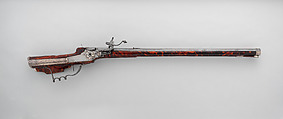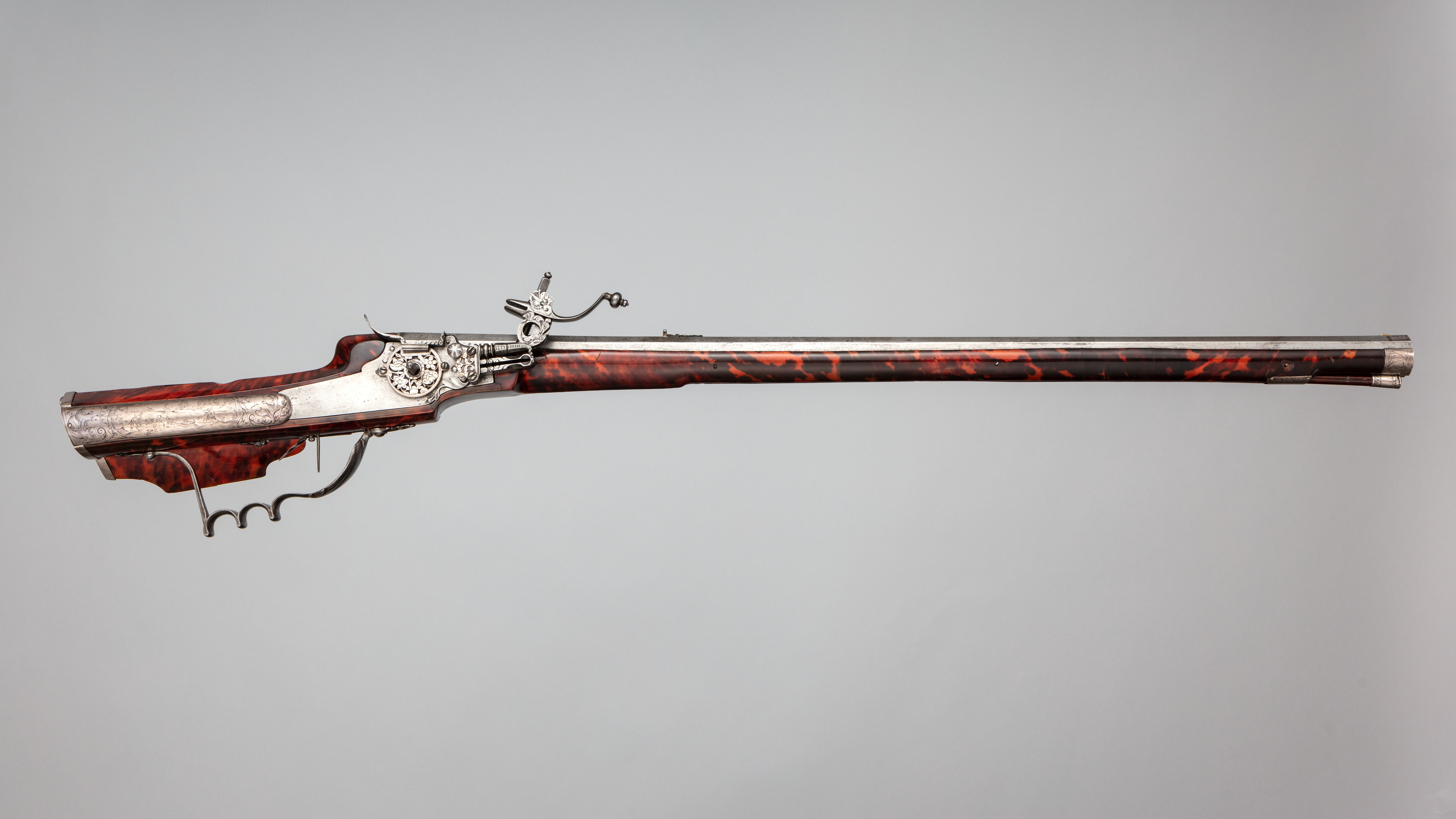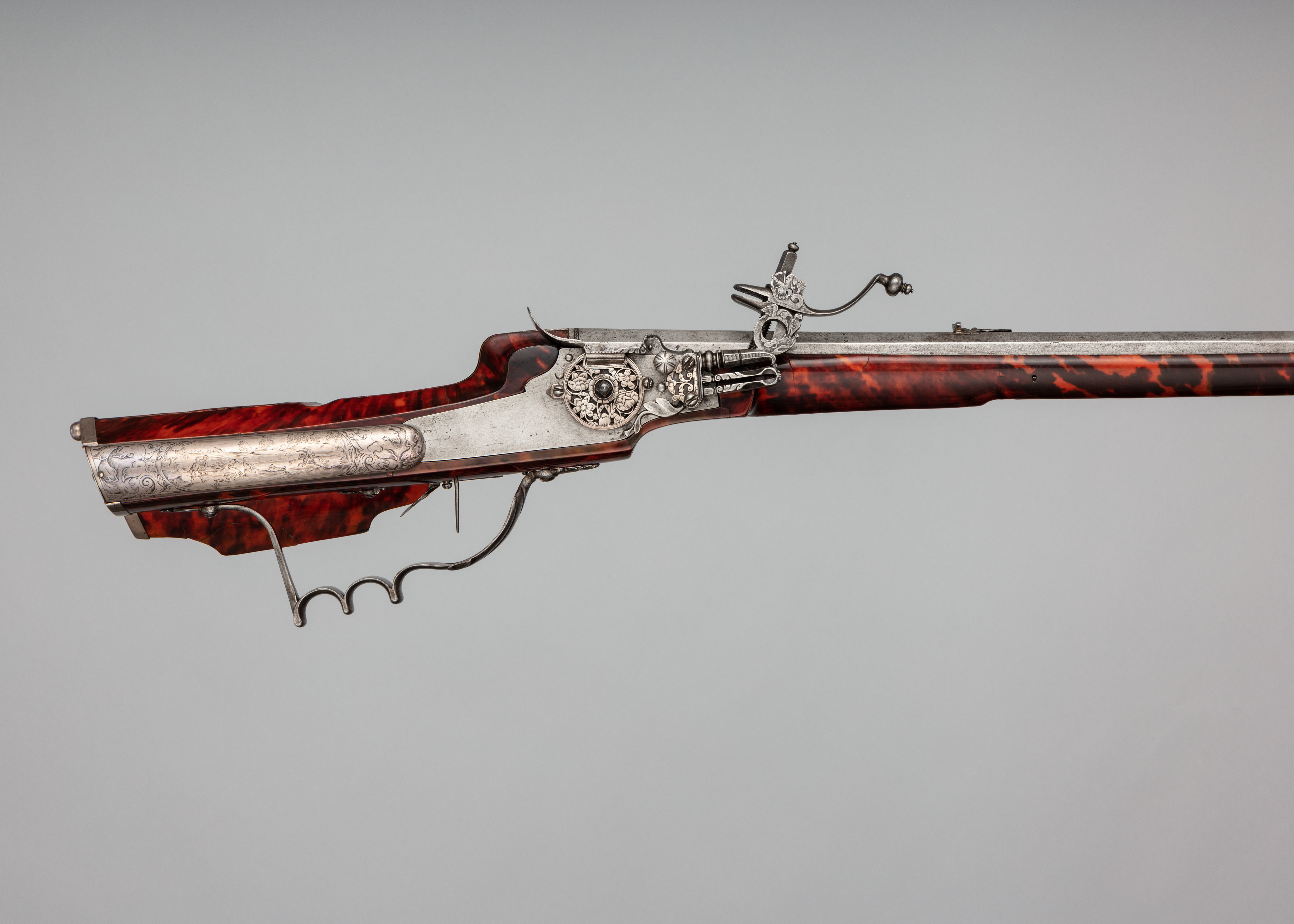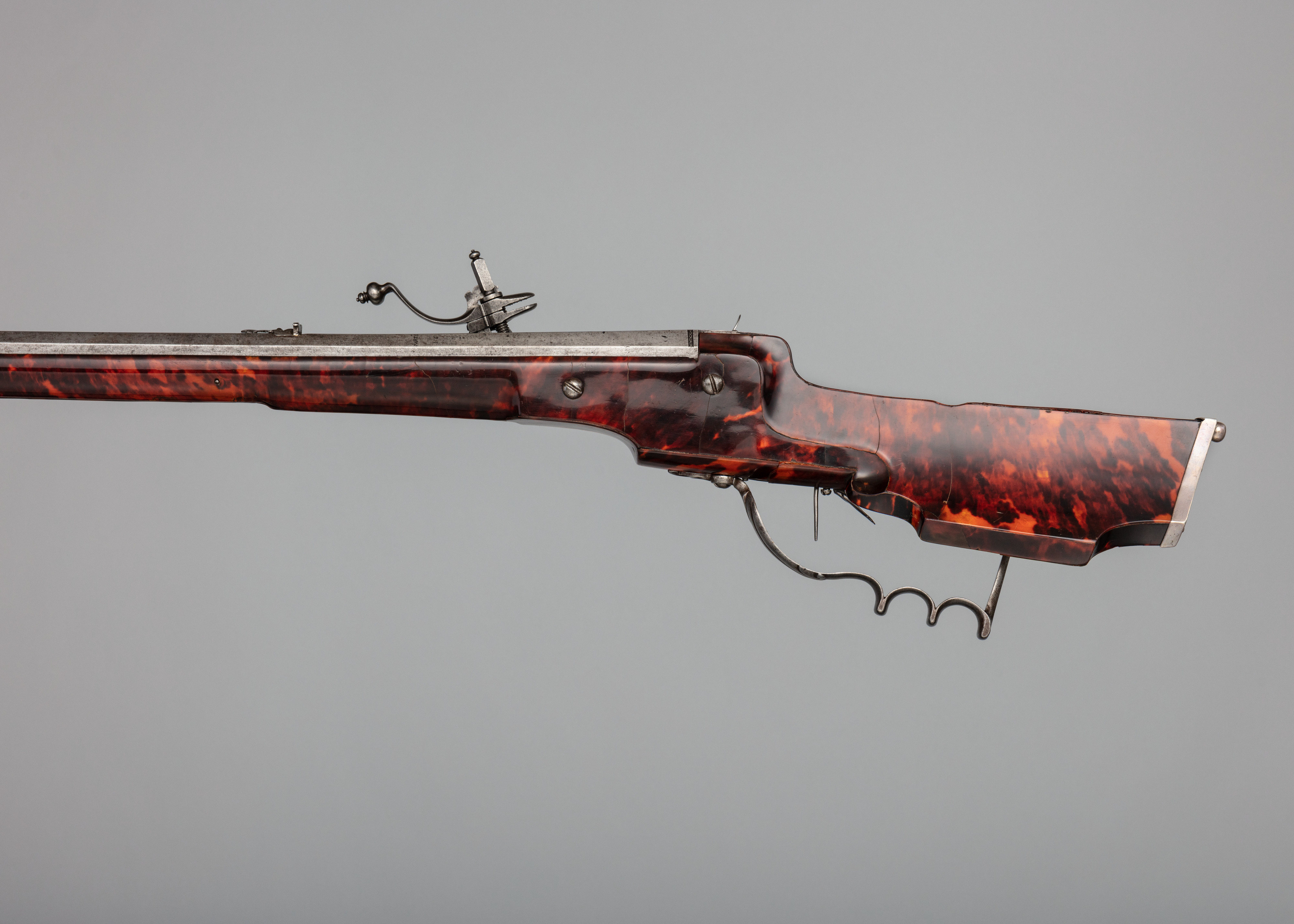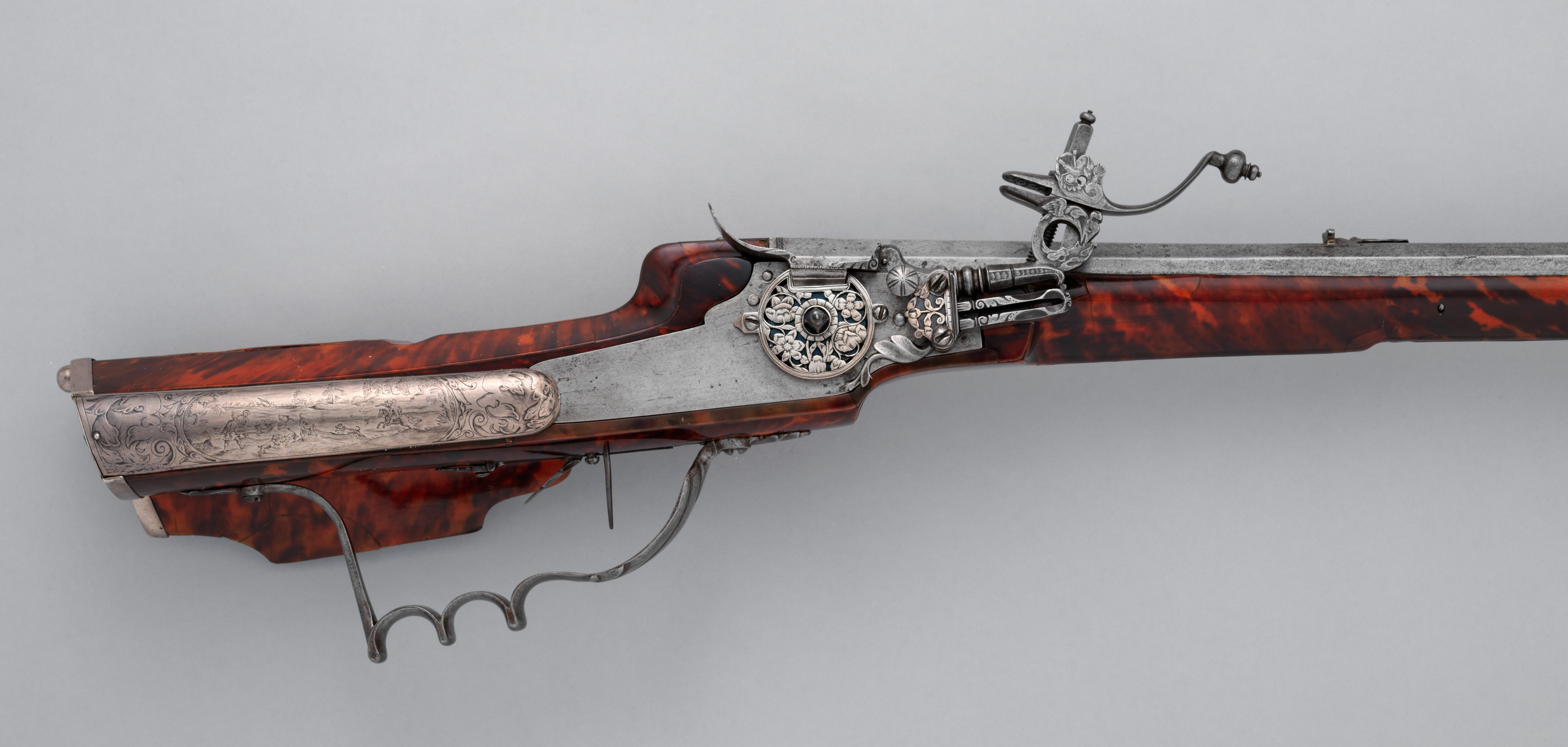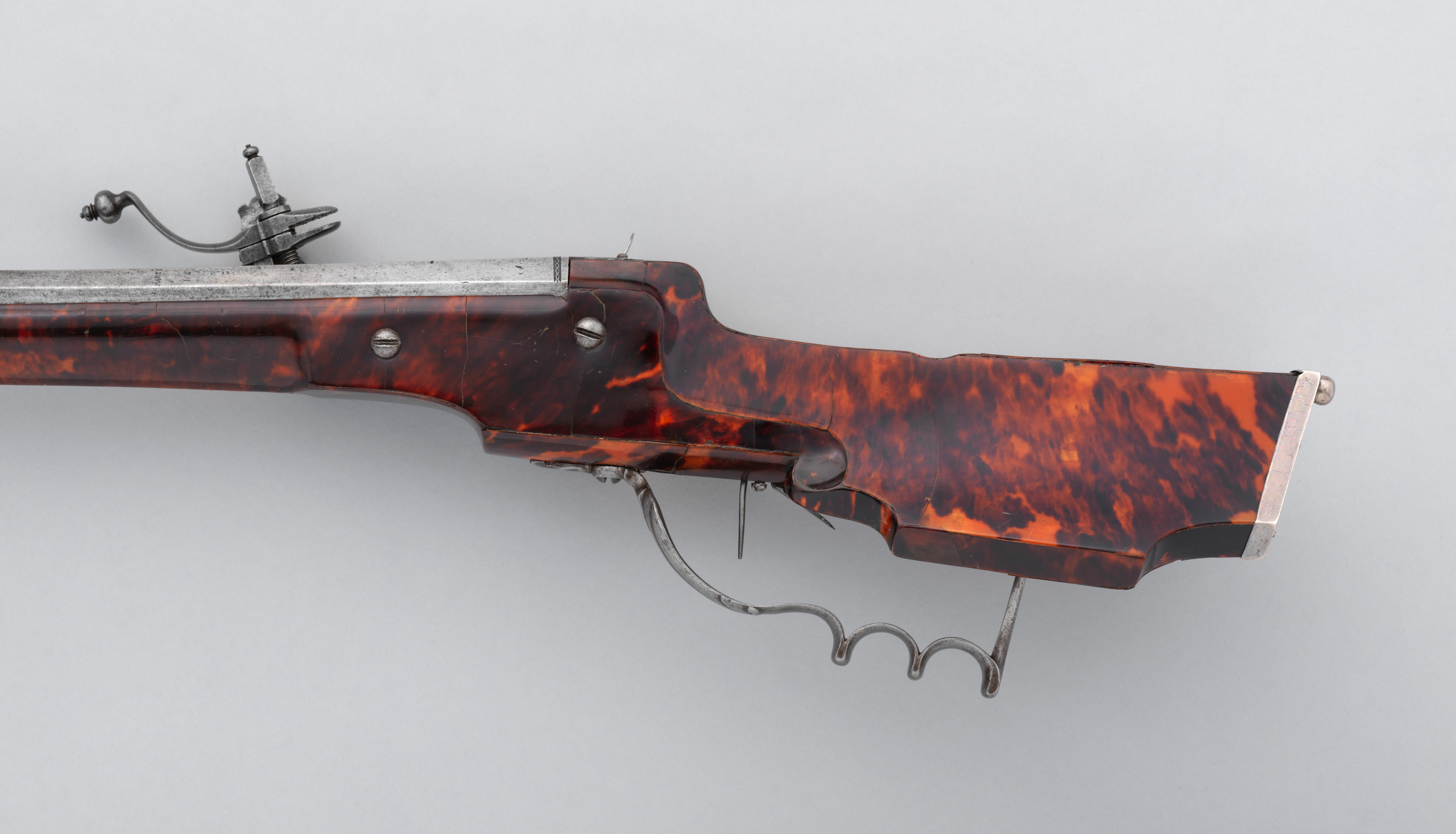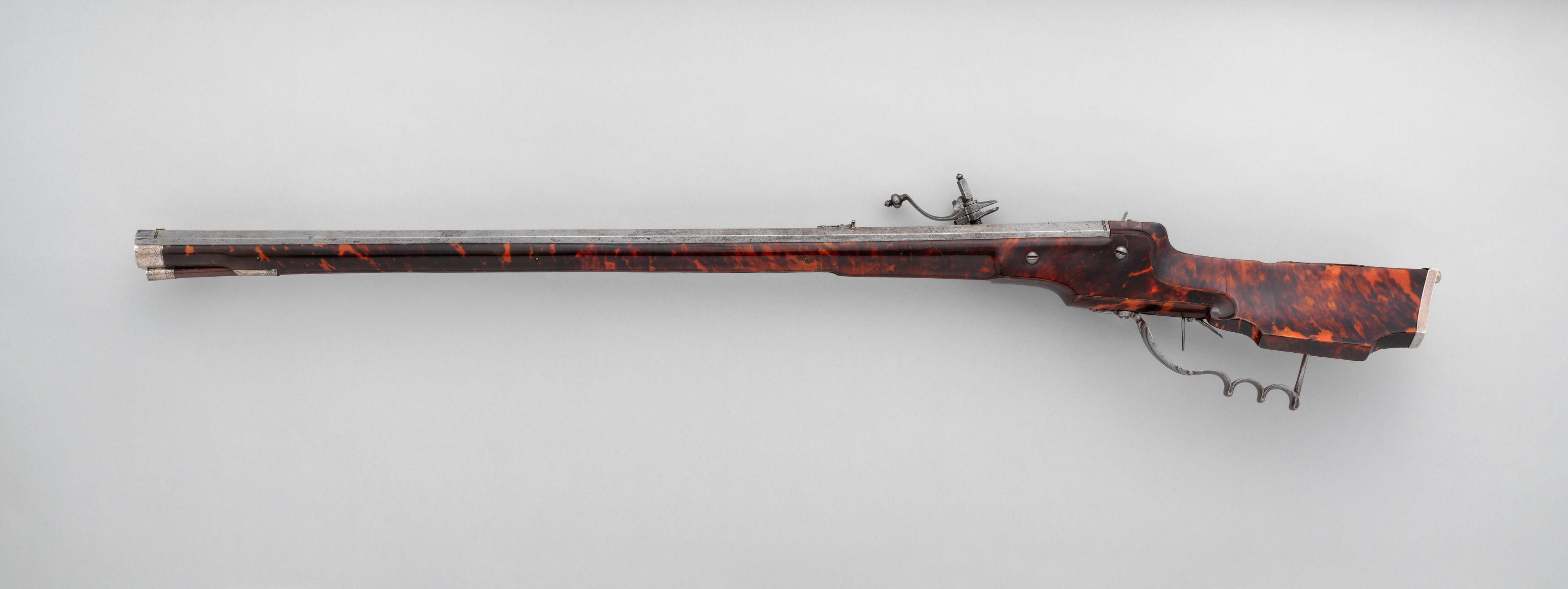Wheellock Sporting Rifle
Gunsmith Martin Kammerer German
Not on view
This fine wheellock Eevenrifle is a rare example of a distinctive class of luxury seventeenth-century sporting firearms that chiefly stand out for the striking adornment of their stocks with unconventional—and sometimes eclectically combined—materials and decorative techniques. The metal components are predominantly plain, allowing the highly burnished and translucent scarlet veneer of the stock to be the primary focus of viewer’s attention. The veneer, made from the shells of Asian tortoises, is a potent manifestation of the Baroque predilection for the unusual and eccentric, applied to the gunmaker’s art.
Fewer than a dozen rifles decorated in this fashion are known. Seven—including this one—bear the signature of Martin Kammerer, one of the preeminent German gunmakers of the Baroque era. They are preserved in the Státní Hrad Bítov; the Tøjhusmuseet, Copenhagen (inv. B. 558); the Wittelsbach Stiftung, Munich; the Philadelphia Museum of Art (acc. 1977-167-809 and 1977-167-810. Bequest of Carl Otto Kretzschmar von Kienbusch, 1977); and the Livrustkammern, Stockholm (inv. 10872, ex-inv. 1346), respectively. The majority originate from the gunrooms of rulers of central European and Scandinavian states, including the Holy Roman Emperors, the kings of Denmark, the kings of Sweden, the prince-electors of Saxony, and the dukes of Bavaria.
The gift of this rifle complements another rifle by the master, which The Met acquired in 2015, and whose stock is just as unconventionally veneered in plaques of deer antler.
This image cannot be enlarged, viewed at full screen, or downloaded.
This artwork is meant to be viewed from right to left. Scroll left to view more.
